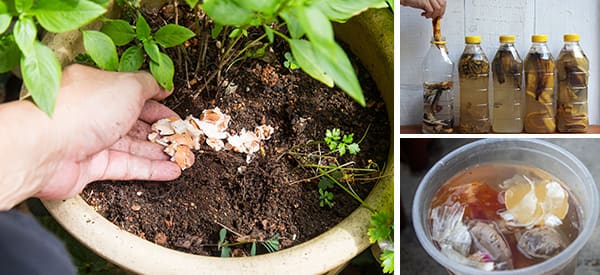
13 Homemade Fertilizers for Your Plants
Mature compost and bark chips are always going to be your best choice as a fertilizer, since these provide a broad range of nutrients as well as organic matter, making them more effective than any liquid fertilizer.
But there are some plants that are hungrier for specific nutrients and can deplete these from the soil. Some plants prefer acidic soil while others like it alkaline. The pH of the soil and the abundance of certain elements may make others unavailable to the plant. A smart gardener can encourage an “ideal” plant-specific environment with certain waste products from around the home and garden.
The following can all be thrown on your compost or you can be a bit more specific and throw them where they are really needed, all without spending a cent!
Weed Tea deals with those more persistent weeds and is a liquid fertilizer. You can find the details and instructions here.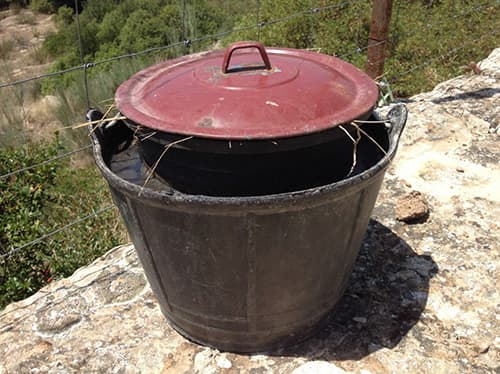
Wood ash from your fireplace is great for alkaline-loving plants.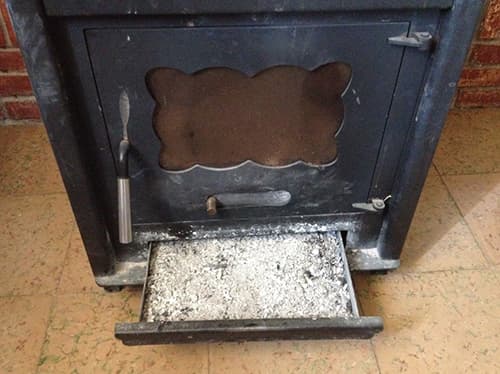
Need to clean out your freshwater aquarium? It’s perfect as an all-purpose fertilizer.
Banana peels are a good source of potassium which is important for fruit and vegetable production. Bury them during planting time.
Don’t pour your unsalted cooking water down the drain! The water you boil your veggies, pasta, or rice in is full of soluble nutrients that, once cooled and diluted with water 1:1, are suitable for many plants (as long as there is no added salt).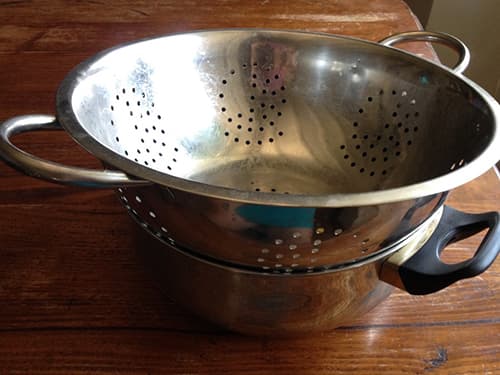
For those who live by the coast, seaweed can be a decent micronutrient fertilizer, containing boron, iodine, and magnesium. Be sure to harvest from clean water away from industrial areas. Wash in fresh water and either make it the same way as weed tea or dry it and use it as mulch directly around your plants. It increases germination, disease resistance, and yield.
Used coffee grounds and tea are acidic so are great scattered around acid lovers.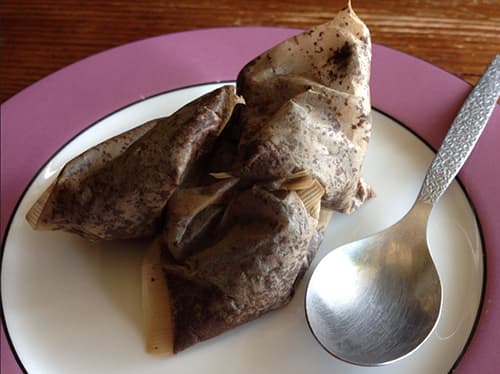
The pull and dump (or cut and drop) method is simply a matter of pulling up a weed and dumping it straight on the ground again. In most cases, the weed breaks down under the sun and most of its nutrients will slowly return to the soil where you dumped it.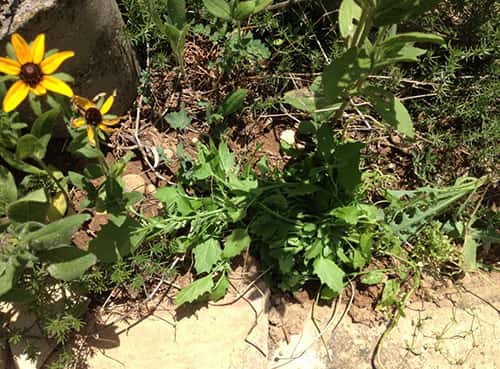
Need to pee? Go into the garden! Urine contains sodium, potassium, chloride, uric acid, and most importantly, urea. Urea is high in nitrogen. As long as you dilute it down with 1 part urine to 10 parts water, then it is safe to use on acid lovers.
For the fisher folk, you can use the unwanted fish parts to make your own fertilizer that’s high in nitrogen. Either bury it or use the same method as weed tea. Use it as a quick feed for your veggies and houseplants.
⇒ The Hidden Food Growing Fence (Video)
Eggshells provide calcium but need to be dissolved in vinegar first to make calcium acetate, then dilute 1 teaspoon of calcium acetate per gallon of water. Calcium is difficult to move around in plants, but spraying the leaves and soil can improve calcium levels in the plant. Although, adding calcium is only necessary in areas with soft water or those using rainwater.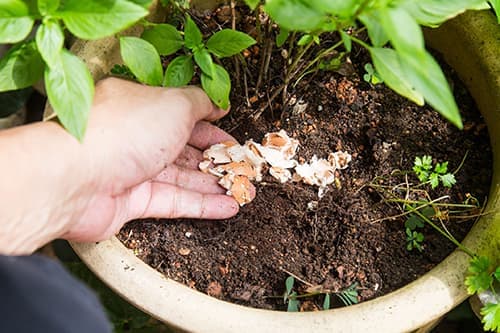
Dried animal manure has many benefits, just be sure that it’s only from herbivores. Collect the dry manure during the summer and scatter it around your garden beds, by spring, the manure has decomposed perfectly. Ideal for leafy greens. Immature manure is too high in nitrogen (14:1:1) and will burn plants. Do not use manure around nitrogen fixers.
Bokashi produces fermented juice made from kitchen scraps that doesn’t smell. Personally, I see the fermentation step a bit unnecessary since the end product tends to be very low in nitrogen, high in sodium, and potentially toxic levels for chloride! This is usually a result of throwing processed or cooked foods in the bucket which have preservatives and added salt. Although, it’s a great option for indoor/balcony gardeners who don’t have a large compost pile, but don’t want all their kitchen scraps going to landfill. The very low nitrogen may make it a suitable fertilizer for nitrogen-fixing plants.
⇒ 10 Plants That You Should Never Plant Together (Video)
Nitrogen Fixers and Acid Versus Alkaline Lovers
Nitrogen-fixing plants: Legumes such as alfalfa, beans, clover, peas, lupins, peanuts, vetch (Vicia spp.), licorice, sea buckthorn (Hippophae spp.), deer bush (Ceanothus spp.), silverberry (Elaeagnus spp.), buffaloberry (Shepherdia spp.), avens (Dryas spp.), Mountain mahogany (Cercocarpus spp.), bitterbrush (Purshia spp.), wax myrtle (Myrica spp.), acacia trees, alder trees, Robinia trees, laburnum trees, mimosa trees, mesquite trees, redbud/Judas trees.
Acid-loving plants: citrus trees, tomatoes, potatoes, azaleas, rhododendrons, hydrangeas (for blue flowers), roses, camelias, viburnum, heaths (Erica spp.), holly (Ilex spp.), blueberries, oaks, magnolias, conifers, cypress and pine trees.
Alkaline-loving plants: lilacs, hawthorns, buckthorns, strawberry trees, pomegranates, olives, passion fruit, buddleias, clovers, poppies, the cabbage family, borage, lavender, fennel, thyme, oregano, and rosemary.
Application
The requirements of nitrogen, phosphorus, and potassium changes as the plant grows, and their depletion from the soil will vary depending on a number of factors, including soil type, season, soil pH, amount of water, leaching, amount of ground cover and what other plants are in the vicinity, such as nitrogen-fixing legumes.
Look for signs of browning or yellowing leaves, burnt leaf tips, blossom end rot, and other discolorations as a sign of when, or when NOT to apply any fertilizer.
Conclusion
The point of this article is to highlight how to recycle everyday waste in ways that are more plant-specific; hopefully resulting in smarter fertilizing. Trying to match the plant to fertilizer is a bit of a balancing act, but it’s important to get it right (and NOT overdo it) so that you only add specific nutrients when and where necessary.
You may also like:
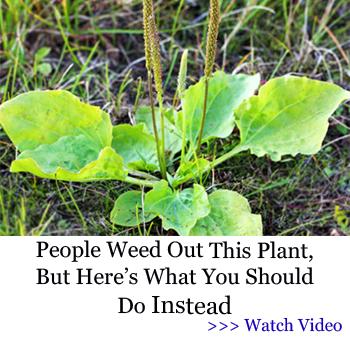 Weed Tea- Turning Unwanted Plants Into Fertilizer
Weed Tea- Turning Unwanted Plants Into Fertilizer
25 Remedies Made from Things People Usually Throw Away (Video)






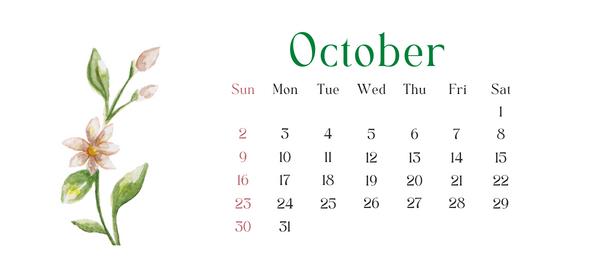
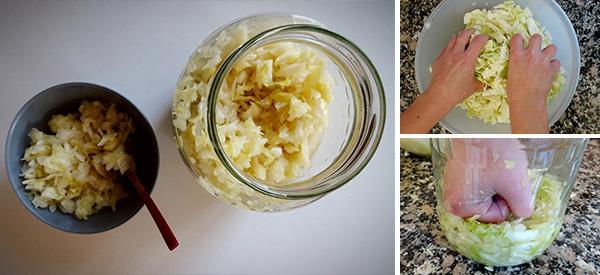
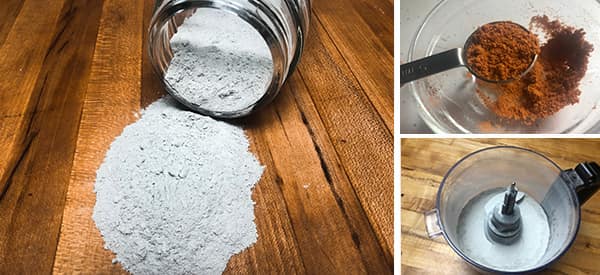
Comfrey and or Stinging Nettle either as chop and drop or as a compost tea (chop, mix with water and cover let brew for a few weeks and then dilute 10/1 with water is an amazing fertilizer also molasses. Chop half a bucket (5 gallon) full of leaves cover completely with water, weigh it down, stir it every couple of days. I sometimes throw in a banana peel or two and blackstrap molasses (but is enough on it’s own as a balanced fertilizer). Comfrey is also great as chop and drop.
Also, comfrey tea and comfrey leaves is excellent for helping break down a compost pile
Hello Suzanne,
Thank you so much for taking the time to share this detailed information with us!
We really appreciate your contribution.
Many blessings and good health!
Great information, thanks! 🙂
Hello Rebecca,
Thank you for your kind comment!
We are happy to hear you enjoy the article.
Many blessings and good health!
I read somewhere that roses love bananas. Having a couople of banana peels, I cut off the hard stem and top, chopped them up and pureed them in my bullet with water. We had a rhododendron that was suffering from the heat and insufficient water. I pruned off the damaged branches and fed the plant a cup of the mixture in a gallon or so of water in late July, which is not the proper time to trim them. Within a week they were sprouting leaves on the pruned branches. I have continued to feed the plant whenever it has been hot (a LOT this year) and it has held up well.
I have been using the blender or Bullet to grind up organic kitchen wastes, including eggshells, to a very fine grind, then buying it in shallow (1-1/2 to 2″) trenches near my plants for years, as I lived in apartments and could not have a compost pile. The owners loved it. No odor, very little effort, and healthier plants.